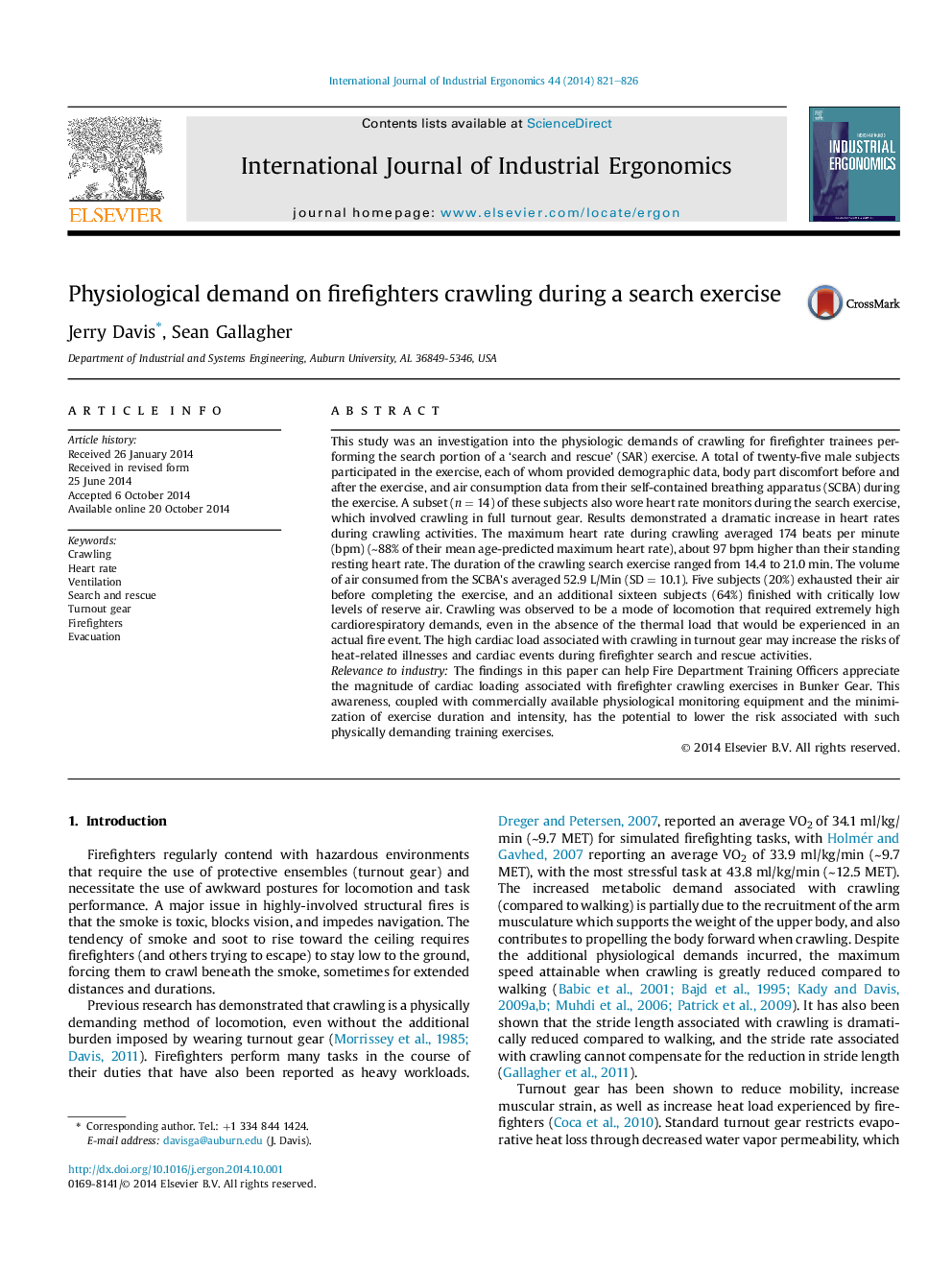| کد مقاله | کد نشریه | سال انتشار | مقاله انگلیسی | نسخه تمام متن |
|---|---|---|---|---|
| 1096009 | 1487431 | 2014 | 6 صفحه PDF | دانلود رایگان |
• Physiological effects associated with crawling have been sparsely researched.
• Firefighters routinely use this type of locomotion.
• Extensive crawling is equivalent to maximal exercise testing.
This study was an investigation into the physiologic demands of crawling for firefighter trainees performing the search portion of a ‘search and rescue’ (SAR) exercise. A total of twenty-five male subjects participated in the exercise, each of whom provided demographic data, body part discomfort before and after the exercise, and air consumption data from their self-contained breathing apparatus (SCBA) during the exercise. A subset (n = 14) of these subjects also wore heart rate monitors during the search exercise, which involved crawling in full turnout gear. Results demonstrated a dramatic increase in heart rates during crawling activities. The maximum heart rate during crawling averaged 174 beats per minute (bpm) (∼88% of their mean age-predicted maximum heart rate), about 97 bpm higher than their standing resting heart rate. The duration of the crawling search exercise ranged from 14.4 to 21.0 min. The volume of air consumed from the SCBA's averaged 52.9 L/Min (SD = 10.1). Five subjects (20%) exhausted their air before completing the exercise, and an additional sixteen subjects (64%) finished with critically low levels of reserve air. Crawling was observed to be a mode of locomotion that required extremely high cardiorespiratory demands, even in the absence of the thermal load that would be experienced in an actual fire event. The high cardiac load associated with crawling in turnout gear may increase the risks of heat-related illnesses and cardiac events during firefighter search and rescue activities.Relevance to industryThe findings in this paper can help Fire Department Training Officers appreciate the magnitude of cardiac loading associated with firefighter crawling exercises in Bunker Gear. This awareness, coupled with commercially available physiological monitoring equipment and the minimization of exercise duration and intensity, has the potential to lower the risk associated with such physically demanding training exercises.
Journal: International Journal of Industrial Ergonomics - Volume 44, Issue 6, November 2014, Pages 821–826
